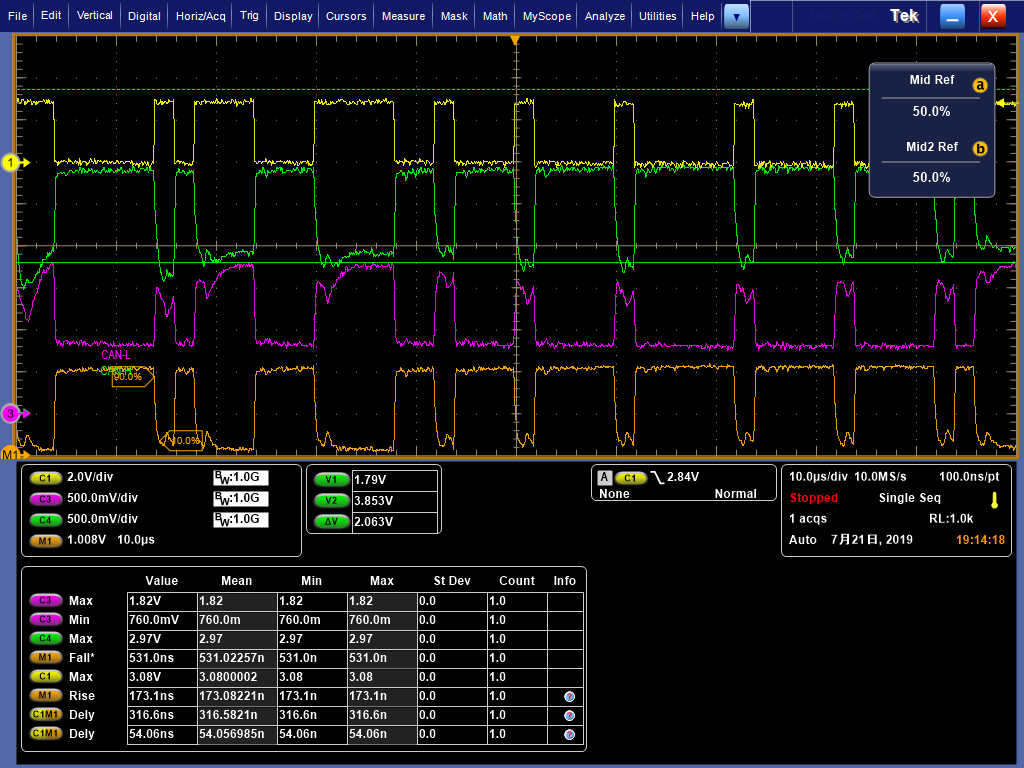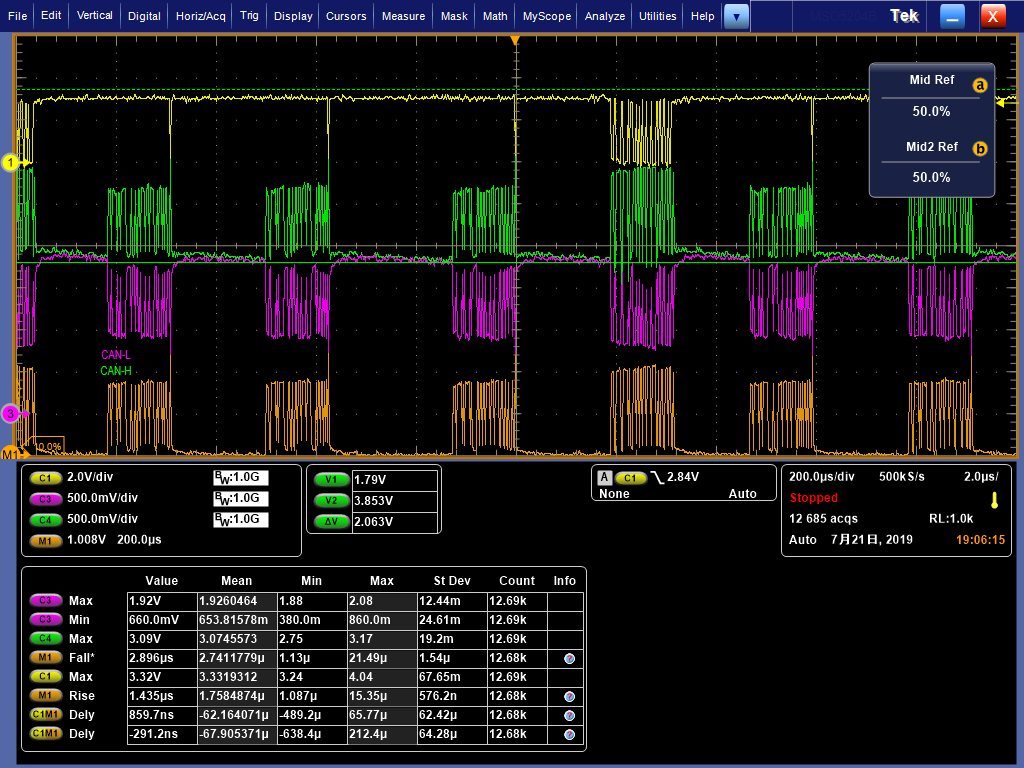Other Parts Discussed in Thread: TCAN332,
Could you help me about this puzzled.
CTM is evaluate TCAN332 and they test the timing value of node after TCAN332G connects to the 100-meter network cable, the rate is 500Kbps.
The measured tpHR (C1M1) was 316 ns, tpLD was 54 ns, tR = 173 ns, and tF = 531 ns. The test waveforms are shown in the attachment. Received has not been tested yet.
Are these values reasonable?
Problem: There is no limit value in the datasheet . How to determine whether this measured data meets the chip specifications?
. How to determine whether this measured data meets the chip specifications?


